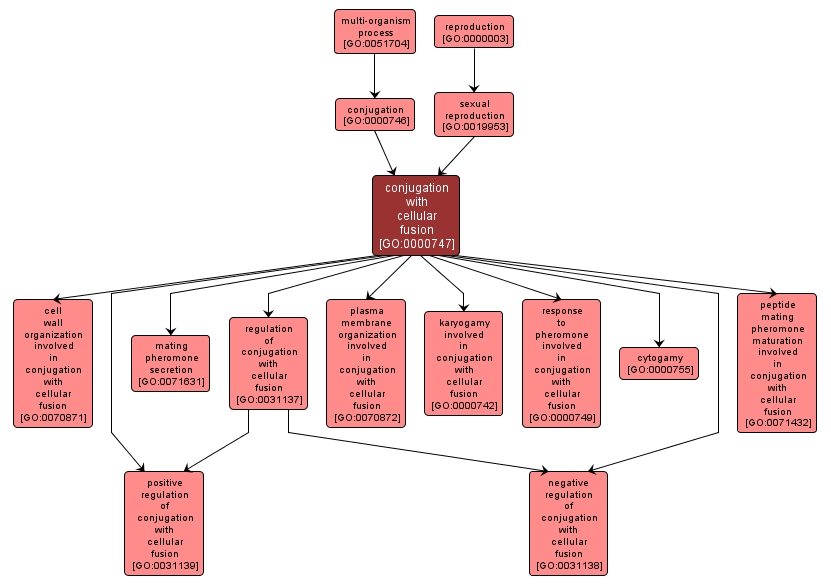GO TERM SUMMARY
|
| Name: |
conjugation with cellular fusion |
| Acc: |
GO:0000747 |
| Aspect: |
Biological Process |
| Desc: |
A conjugation process that results in the union of cellular and genetic information from compatible mating types. An example of this process is found in Saccharomyces cerevisiae. |
Synonyms:
- cell fusion
- GO:0007322
- GO:0007333
- GO:0030461
- GO:0030477
- mating
|
|

|
INTERACTIVE GO GRAPH
|














